Searching to know about an exceptional oceanic creature? Alright, this is the right place to know about a unique and smallest creature which is Kemp’s Ridley Sea Turtle.
This iconic creature is one of the world’s most endangered sea species. Besides this, Kemp’s ridley sea turtles are captivating for their remarkable adaptation and life cycle. Moreover, this is the only turtle that has an almost circular carapace.
Also, these wandering marine creatures face various threats which push them to the verge of extinction. In this blog, I will discuss their olive-gray carapace to the journey from nest to ocean. Some conservations of these threats are also discussed here. Let’s delve into this blog.
Characteristics of Kemp’s Ridley Sea Turtle [Reference 1] [Reference 2]
This is the smallest sea turtle and has a hooked beak. Also, its top shell color is grayish-green whereas the bottom shell color is yellowish. For this creature, the carapace is known as the top shell of Kemp’s Ridley Sea Turtle.
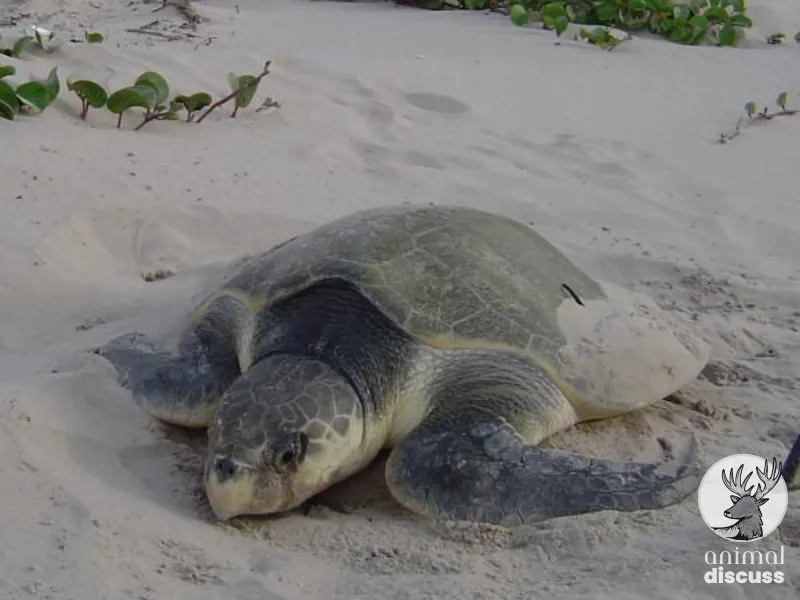
After that, they also have triangular-shaped heads with dark spots. Thus, their hatchlings are found with these shark spots on both sides of them.
Moreover, this turtle has appendages shaped like flippers. Here, frontal flippers have one claw, and back flippers have one or two claws. Then, the carapace of this creature is wider and also contains five pairs of costal scutes.
On the other hand, one of the most interesting facts is that female kemp’s ridley sea turtle nest in the daylight only. Also, this comes to shore for nesting at once which is referred to as arribadas which means arrival.
Furthermore, they have spacious space in their mouth with jaws which help them crush food. Here are this sea creature’s more interesting facts are discussed in the table below:
| Features | Facts |
|---|---|
| Common name | Kemp’s Ridley Sea Turtle |
| Scientific name | Lepidochelys kempii |
| Type | Reptile |
| Family | Chelonioidea |
| Size | 58-70 cm |
| Shape | Triangular-shaped |
| Average Weight | 75-100 pounds |
| Average Length | 27-32 inches |
| Average lifespan | 50-100 years |
| IUCN red listed | Endangered |
| Diet | Omnivores |
| Habitat | Mostly found in the Gulf of Mexico |
| Coloration | 1. Top color- grayish-green 2. Bottom color- yellowish tone |
| Top speed | 10kmph (6.2 mph) |
| Nesting | Beaches of Gulf Mexico and primarily in Tamaulipas, Mexico |
| Predators | Shorebirds, sharks, and other sea animals |
| Population | 7,000-9,000 individuals |
What Do Kemp’s Ridley Sea Turtles Eat? [Reference]
This sea turtle primarily eats crabs and snails by using their jaws. Also, these small creatures are found in seaweed. They prefer shallow water so that they can dive deep and get their favorite food.
Kemp’s Ridley Sea Turtles are omnivorous. So, they also eat jellyfish as their favorite food. Moreover, they eat sargassum and seaweed.
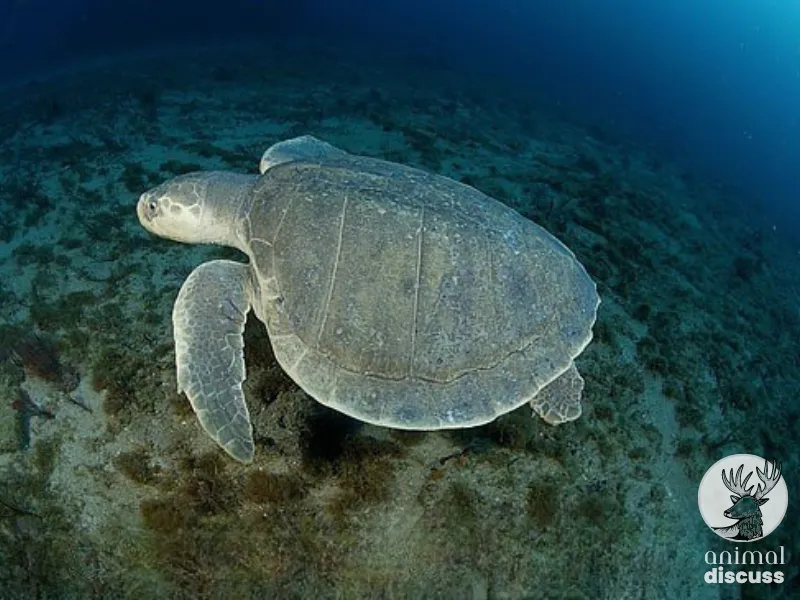
On the other hand, adult turtles are known as benthic feeders, because they always search for food on the seabed. Their regular eating food list is here:
- Crabs
- Mussels
- Clams
- Shrimp
- Fish
- Sea Urchins
- Squid
- Jellyfish
This turtle forages their food on the Gulf of Mexico. Also, from the Yucatan Peninsula to Southern Florida are their other foraging areas for their food.
Curious to know more about their food habits? Read this article “Food of Kemp’s Ridley Sea Turtle”.
Where Do Kemp’s Ridley Sea Turtles Live? [Reference]
The warm waters of the Atlantic and Gulf of Mexico are home to Kemp’s Ridley Sea turtles. They mostly use the coastlines of Mexico and the southern United States as their nesting grounds.
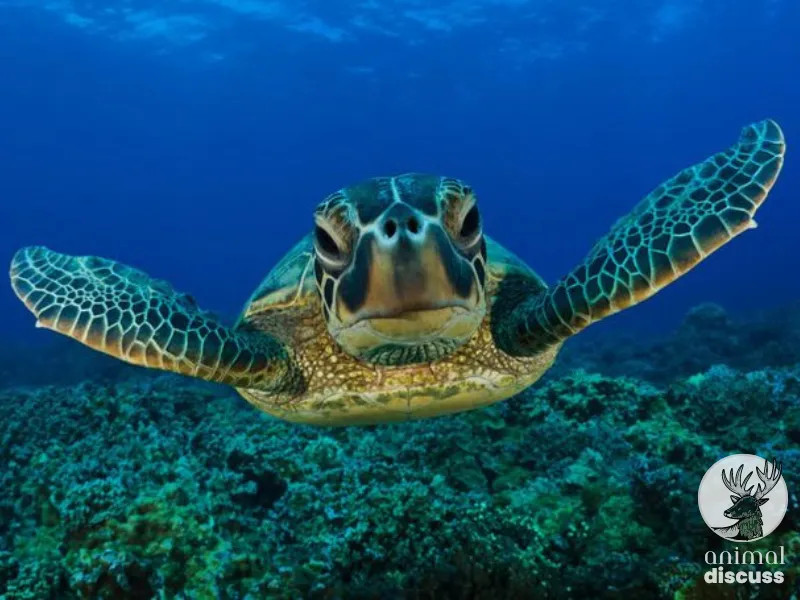
However, the females of these turtles migrate in a distinctive way, covering great distances to return to their birth beaches in order to lay their eggs. The beaches of Tamaulipas, Mexico, especially the well-known Rancho Nuevo beach, serve as the primary nesting grounds for Kemp’s Ridley turtles.
Migration Pattern and Breeding Grounds
Female Kemp’s Ridley Sea turtles can travel thousands of miles from feeding grounds to breeding beaches as part of their broad oceanic migration cycle.
Usually between April and June, female Kemp’s Ridley turtles return to their native beaches to lay their eggs after mating in offshore waters. Thousands of female turtles gather to lay their eggs on the same beach during the synchronized nesting phenomena, or arribada.
You can check this article to read further about their habitat “Grasp Every Bit of Kemp’s Ridley Sea Turtle Habitat”.
Behavioral Facts Of Kemp’s Ridley Sea Turtle [Reference]
Kemp’s Ridley Sea Turtles are unique in their behavior. Their nesting behavior, hatchling survival, and foraging behaviors are the most important factors. These are discussed below:
Nesting Behavior
The nesting behavior of Kemp’s Ridley Sea turtles is distinctive in that the females emerge from the water during the night and deposit their eggs on sandy beaches. When they are nesting, they use their flippers to dig a nest chamber, lay a clutch of eggs, and then carefully cover the nest to keep predators out.
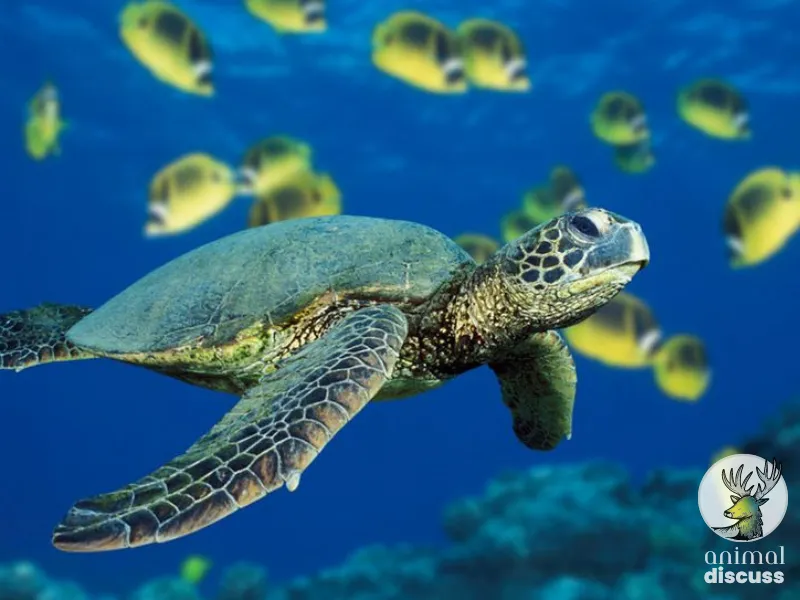
Moreover, from mid-March to August, female Kemp’s Ridley nest for 1-3 years. During this, they lay 1-4 nesting clutches. This can happen in only one nesting season. 100 eggs are found in each nest which takes 6-8 weeks to hatch.
Hatchling Survival
The hatchlings of Kemp’s Ridley turtles follow the moon’s reflection on the water as they naturally head toward the ocean. This is a dangerous journey since many hatchlings end up as prey for predators or run into beach obstructions.
But for those that make it to the ocean, the voyage begins, with a plethora of obstacles and dangers to contend with.
Foraging Behavior
As they get older, Kemp’s Ridley Sea turtles start eating crustaceans and other marine invertebrates, which they find along coastal and estuary regions.
Seasonal variations in prey availability and environmental factors impact their foraging behavior; certain individuals show site fidelity to particular foraging sites.
You can check this article to read further about their behavior.
Facing Challenges of Kemp’s Ridley Sea Turtle
The biggest risks to Kemp’s Ridley populations are illegal trade, pollution, climate change, bycatch in fishing gear, and habitat loss and degradation.
Here are some threats and challenges of Kemp’s Ridley Sea Turtle for you:
Habitat Loss and Degradation
For foraging, nesting, and migration, Kemp’s Ridley Sea turtles are dependent on particular coastal and marine ecosystems. However, human activities like beach erosion, coastal development, and habitat degradation are posing an increasing threat to these habitats.

This is happening as a result of urbanization, pollution, and the development of nesting beaches into commercial areas or vacation destinations.
Pollution
Throughout their whole life cycle, Kemp’s Ridley Sea turtles are seriously threatened by marine pollution. Sea turtles are at risk of entanglement and swallowing due to the contaminated coastal and oceanic ecosystems.
For example, plastic litter, abandoned fishing gear, oil spills, and chemical contaminants. Consuming plastic bags can result in intestinal obstructions, internal bleeding, and malnourishment. This also can result in diminished development and abnormal reproduction.
Furthermore, the tissues of sea turtles can store chemical contaminants like pesticides and heavy metals. This also can harm their immune systems and reproductive systems.
Climate Change
Here comes climate change. This causes current risks to Kemp’s Ridley Sea turtles and their ecosystems. Rising sea levels, higher temperatures, ocean acidity, and changing weather patterns all have an impact on nesting beaches, foraging areas, and migration routes.
Sea level rise threatens to flood nesting beaches, diminishing viable nesting habitat and increasing erosion rates. Warmer temperatures may affect hatchling ratios and result in uneven populations.
Moreover, ocean acidification reduces the quantity and quality of food sources for Kemp’s Ridley turtles. Because this interferes with their foraging behavior and nutritional intake.
Bycatch in Fishing Gear
Kemp’s Ridley Sea turtles are especially vulnerable to bycatch in commercial fishing gear, particularly trawl nets, gillnets, and longlines. Every year, numerous turtles are injured, drowned, or killed as a result of being accidentally caught in fishing gear.
The use of inadequate or poorly built fishing gear, such as nets, increases the likelihood of turtle entanglement and death.
Conservation Efforts
According to the IUCN red list, this creature is endangered. Conservation measures have been launched in response to the critically endangered Kemp’s Ridley marine turtles.
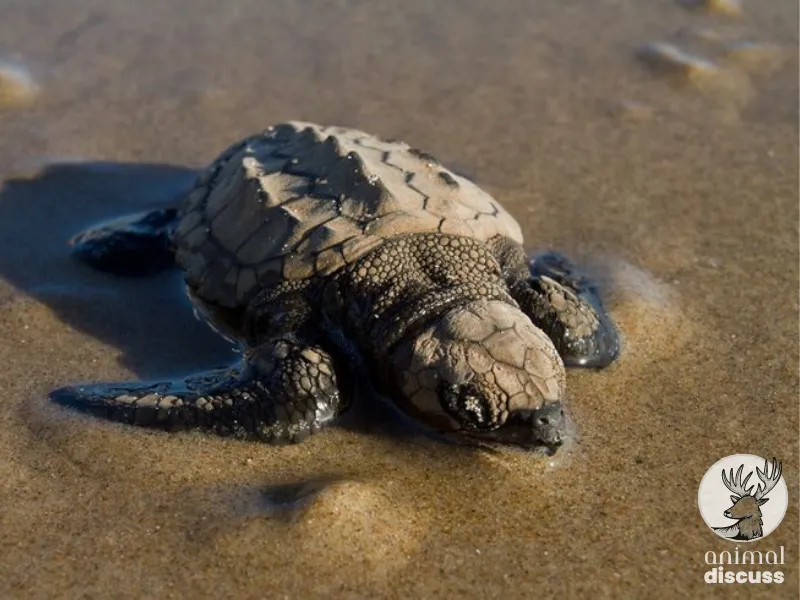
These activities include habitat conservation, nesting beach protection, fisheries management, public awareness campaigns, and international cooperation to address global challenges.
Some conservation efforts are found below:
- Beach clean-up campaigns and plastic recycling programs.
- Waste management solutions to minimize pollution in coastal environments.
- Habitat monitoring and modeling to assess vulnerability to climate change.
- Coastal adaptation measures, such as beach renourishment and shoreline stabilization.
- Mandatory use of turtle excluder devices (TEDs) in shrimp trawl fisheries.
- Community-based conservation initiatives to empower local stakeholders.
- Educational outreach programs and workshops to raise awareness.
- Collaboration on regional and global initiatives to address common challenges.
- Engagement with local communities, schools, and tourism operators.
Frequently Asked Questions
Let’s have a look at some frequently asked questions on Kemp’s Ridley Sea Turtles Overview:
1. Why are Kemp’s Ridley Sea turtles endangered?
Kemp’s Ridley Sea turtles are endangered due to a combination of factors, including habitat loss, pollution, climate change, bycatch in fishing gear, and illegal trade.
2. Do Kemp’s Ridley Sea Turtles have adaptive skills?
Yes, these creatures have strong adaptive skills which are specially for swimming.
Conclusion
Kemp’s Ridley Sea Turtles are the smallest oceanic creatures, and they are omnivorous. They always prefer to eat fish, crabs, seaweed, and scutes.
But their favorite food is crabs. You can find this turtle in the Gulf of Mexico. Their top shell color and bottom shell color are different which is grayish green to yellowish pale.
Likewise, their behavior depends on their nesting procedure, foraging behavior and hatchling survival. Also, they are familiar with their migration pattern. Along with these features, they sometimes face threats to their livelihood. Also, some conservation efforts can save them from those threats in the ocean.

